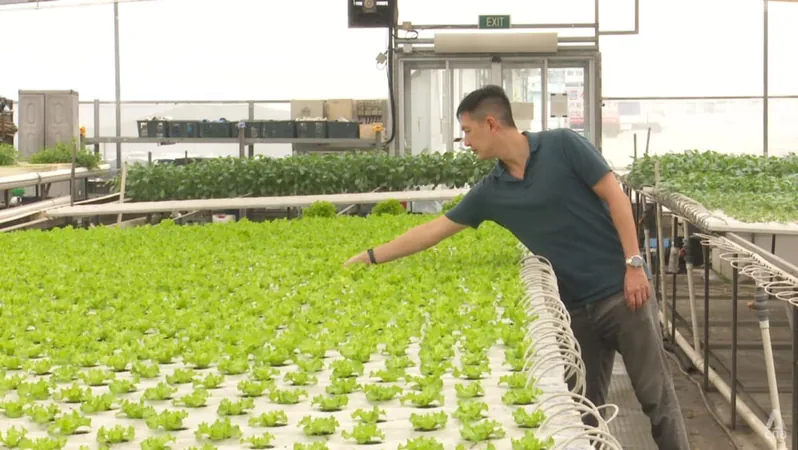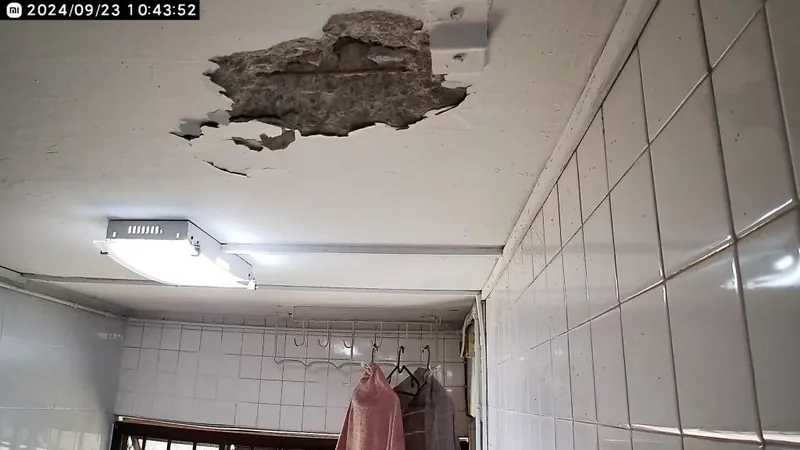
Urban Farms Defy the Elements: Rain or Shine, They Thrive!
2024-09-24
SINGAPORE: As Singapore braces for the increased likelihood of rainfall towards the year's end—a result of the impending La Nina phenomenon—urban farms in the region are proving to be resilient against the weather's unpredictable antics.
La Nina, which tends to bring wetter conditions to Southeast Asia, is predicted to be more pronounced this year, especially during the inter-monsoon months of October and November. Yet, instead of fretting about potential deluges, various high-tech urban farms are adapting and even thriving. For them, increased rainfall is not necessarily a threat but could actually be an asset.
Resilient Urban Farming Practices
Take GroGrace, for example, a pioneering indoor farm developed by Urban Farming Partners aimed at bolstering urban food security. CEO Grace Lim explained how their operation is fully controlled; everything from temperature and humidity to light intensity and nutrient levels is managed meticulously. This robust control system allows GroGrace to maintain steady production all year long: “That’s why we’re shielded from external weather conditions,” said Lim.
ComCrop similarly utilizes advanced greenhouse technology to shield its rooftop farm from the elements. The greenhouses are equipped with weather monitors that dynamically adjust shade cloths based on sunlight availability, ensuring optimal growing conditions regardless of external weather patterns. Remarkably, their crops have thrived even amidst strong winds and heavy rainfall caused by the recent Sumatran squalls.
Eco-Friendly Innovations in Urban Farming
While these commercial farms may incur higher electricity costs due to climate control, they balance those expenses with significant water savings. According to Lim, GroGrace boasts over 80% water efficiency compared to traditional farming methods and also harvests rainwater, recycling it rigorously to support their crops.
On the other hand, ComCrop employs solar panels to mitigate energy costs associated with using LED lights on overcast days. Darren Tan, ComCrop's head of education and community outreach, detailed that during monsoon seasons, cloudy weather can impede plant growth. However, their supplementary lighting helps maintain consistent growth rates, offsetting potential losses.
The Struggles of Smaller Farmers
Despite the successful innovations at these commercial farms, the situation is quite different for smaller-scale operations. Urban farming consultant Christopher Leow pointed out that many micro-farms—such as those in schools or hospitals—lack the resources to build protective structures, leaving them vulnerable to the whims of Mother Nature. These farmers must rely on careful crop planning to adapt to local weather conditions.
With climate change exacerbating weather unpredictability, the need for innovative food production systems has never been greater. Lim emphasized the urgency of developing sustainable methods to ensure food security amid climate disruptions: “Climate change has the potential to destroy an entire harvest, leaving communities without food for weeks or months.”
The Future of Food Security
As urban initiatives continue to evolve, the question remains: can technology keep pace with climate change? The ongoing battle of urban farms against external variables stands as a model for future agriculture. They illustrate that with the right resources, innovation, and foresight, it is indeed possible to ensure food production despite the capricious climate.
As Singapore leads the charge toward food resilience, the potential lessons for farmers across Southeast Asia are enormous. In a world where climate unpredictability is becoming the norm, urban farming may be the key to ensuring that produce remains fresh, accessible, and unaffected by the elements. Could this be the dawn of a new agricultural era? Only time will tell!



 Brasil (PT)
Brasil (PT)
 Canada (EN)
Canada (EN)
 Chile (ES)
Chile (ES)
 España (ES)
España (ES)
 France (FR)
France (FR)
 Hong Kong (EN)
Hong Kong (EN)
 Italia (IT)
Italia (IT)
 日本 (JA)
日本 (JA)
 Magyarország (HU)
Magyarország (HU)
 Norge (NO)
Norge (NO)
 Polska (PL)
Polska (PL)
 Schweiz (DE)
Schweiz (DE)
 Singapore (EN)
Singapore (EN)
 Sverige (SV)
Sverige (SV)
 Suomi (FI)
Suomi (FI)
 Türkiye (TR)
Türkiye (TR)